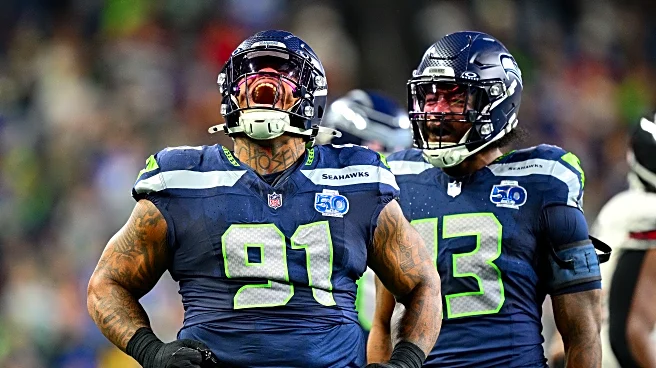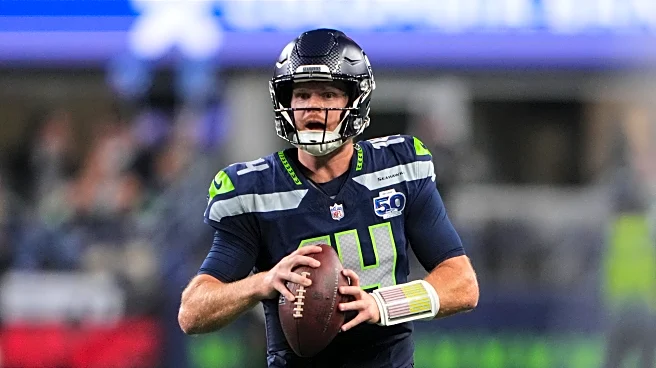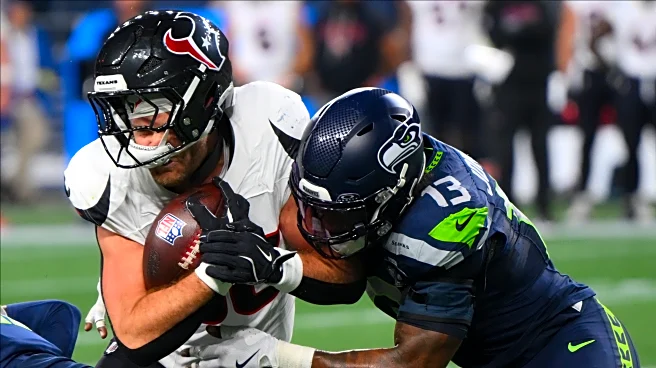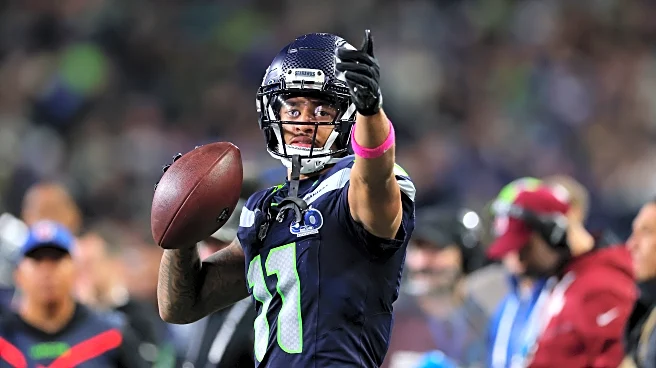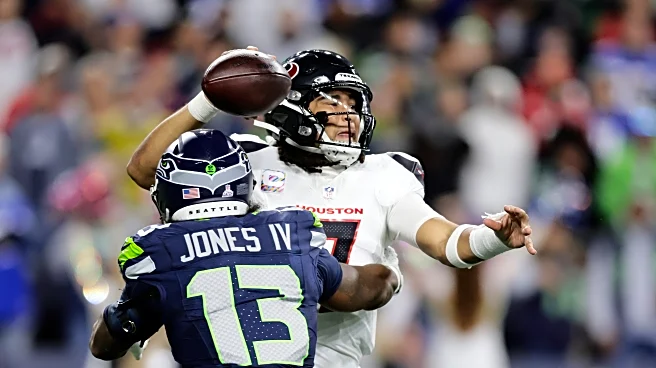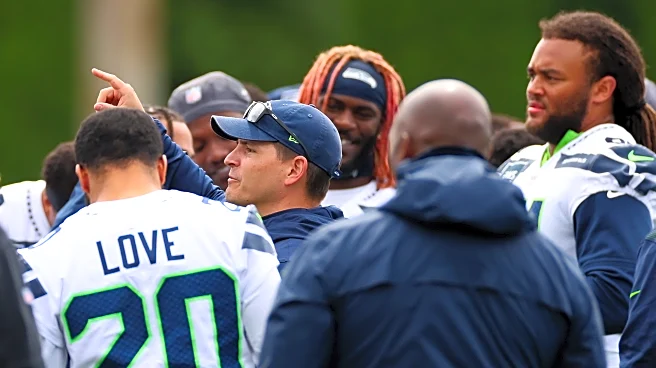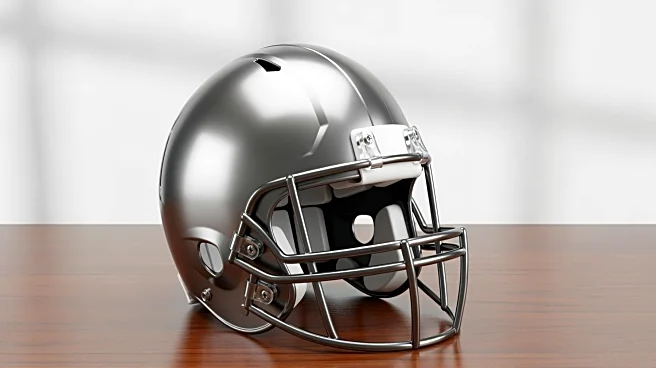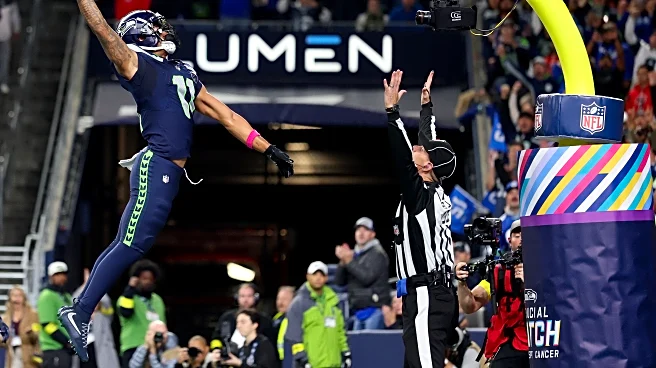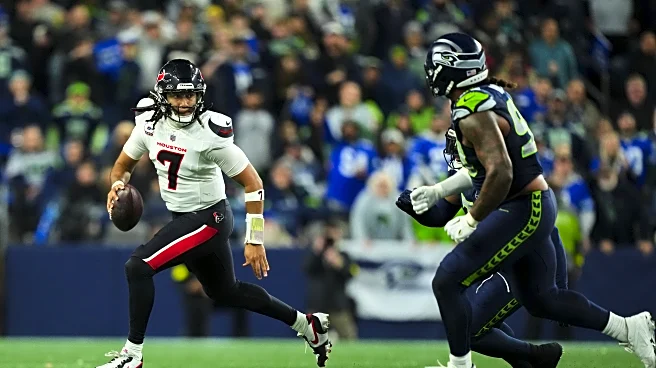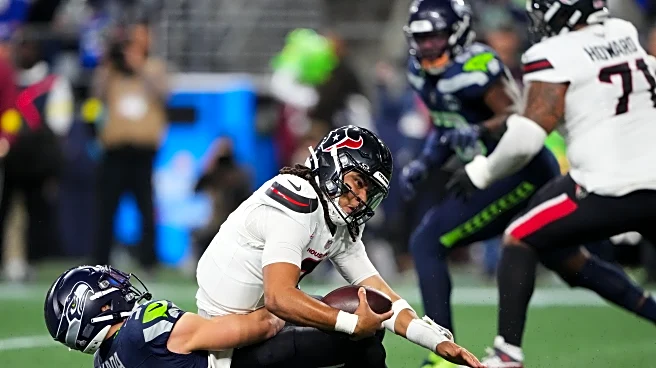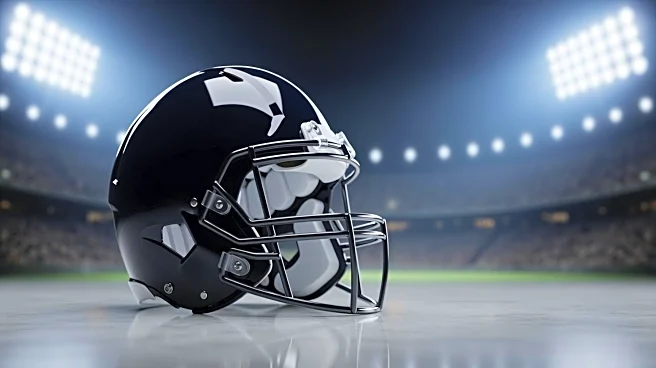In my preview for this game, I wrote about why I thought this would be a tough game. The Seattle Seahawks managed to make it tough for themselves against the Houston Texans, but for other reasons. A strip-sack
in the end zone, three turnovers, and still struggling in the running game.
The defense kept us in the game, and if it maintains this consistency, it could give us hope of reaching greater achievements for the Seahawks. There are mistakes to fix and areas that deserve attention during this bye week. It’s also an opportunity to strengthen the roster.
Could Seattle get a new Ernest Jones, Leo Williams, or Carlos Dunlap?
All data used in this article was taken from PFF.
The Bad
Execution errors (concentration)
This topic corroborates what was discussed in the article’s introduction. The Steelers, Cardinals, Jaguars, and Texans—four victories that could have had a different result, as Seattle tried to complicate things. Against the Bucs, we lost by a field goal, and if not for similar errors, we could have had another victory.
One detail: since 2000, teams that:
- Were penalized 10+ times;
- Had a turnover margin of -3 or worse;
- Converted less than 25% on 3rd downs;
Were 0-31 (including playoffs). Well, now they’re 1-31.
The errors come from places we wouldn’t expect. Elijah Arroyo is a reliable receiver with no history of fumbles. His route running is good, but he needs to adjust his physicality to maintain possession.
There are plenty of other moves to highlight, but I’d like to focus on the biggest reason why we shouldn’t trade Riq Woolen unless a sensational offer arrives or he’s asking for an exorbitant amount to re-sign: Josh Jobe. His tackle attempt is one of the most bizarre/funny I’ve ever seen.
Offensive line and its recurring problems
The trade deadline is approaching, and the Seahawks should be on the lookout for a trade for the referee who executed the best pass block snap of the night.
But seriously, I think that patience has run out with Anthony Bradford. It was clear and evident in primetimes that he’s unfit to start in the NFL.
Klint Kubiak uses an orbit motion, pistol formation, play-action, and shovel pass. As creative as possible, but how can he survive Bradford? He misses the snap, blocks Jalen Sundell, and prevents the center from reaching the linebacker, who ends up tackling Zach Charbonnet, who was already off balance due to Bradford’s contact.
Two RBs in this formation, and the ball is handed off to Ken Walker in motion. Good call, but Bradford is easily pushed back and ends up knocking down Elijah Arroyo, who was going to block the edge, which ultimately ruins Walker’s play.
Also in the running game, the OL struggles to open gaps. The play ends with a TD, but only after much effort. Kubiak puts Charles Cross on the right side, Josh Jones as LT, plus two TEs and a FB. Still, no one creates space. Bradford is moved back, and Grey Zabel fails to create a gap with the pull. Nothing works on the blocks, but the effort results in a TD.
The Seahawks continue to struggle against the stunt. No. 55 and No. 96 attacked with a slant, forcing the line to move to the left side. This is all to create space for the looper (No. 90) to execute a longer stunt. The OL can’t adjust, and the pressure gets to the QB.
Klint Kubiak ups and downs
The Seahawks scored 27 points against a Texans defense that was allowing an NFL-low 12.2 per game, and Klint Kubiak deserves the credit. It was a good result despite some poor play by Seattle’s offense: four turnovers, 2 of 14 on third down, and six penalties.
Here’s an example of good execution on fourth down. Bunch Formation on the left side of the field. There’s a switch release between Tory Horton and Cooper Kupp, and Kubiak calls the Flood Concept (a passing play where three receivers run routes to the same side of the field, overloading that area to stress the defense).
Horton’s route is a more vertical clearout to create space for both JSN (intermediate) and Kupp (short) routes. Sam Darnold has two options but correctly realizes that JSN would be the better alternative since Derek Stingley opened his hip too early and gave up separation. The pass is still a bit behind, and JSN makes the catch.
Kubiak uses his favorite play-action concept once again: Yankee. Horton and JSN run the concept’s main routes, and the OC adds a leak (when a WR initially fakes a block before “leaking” out) from Kupp, who fakes a block release for a run and is free for a 32-yard reception.
The problem on third down is very serious. The call is terrible here, and situationally, it’s even worse. The Seahawks had already been sacked in the end zone, resulting in a touchdown. He calls two passes here instead of running to waste clock. A safety or even another touchdown could have happened, complicating things even further for the Seahawks.
This lack of awareness of the game’s situations had already occurred; in fact, since the game against the Jaguars, Kubiak has been making poor decisions. The interception was due to a bad pass from the QB, but, again, he should have run with the ball.
The Good
Another big JSN game
Jaxon Smith-Njigba (23) is the youngest player in the Super Bowl era with over 75 receiving yards in each of his first seven games of the season. For the third consecutive game, Jaxon Smith-Njigba had 100 receiving yards and a touchdown reception, breaking the tie for the longest streak in Seahawks history. He leads the NFL with 819 receiving yards, no other player has over 700, and set a new record for the most in a seven-game period in Seahawks history. He now accounts for 46% of the team’s receiving yards, the highest rate in the NFL.
JSN became the second player in franchise history to record three consecutive 100-yard games, and his five 100-yard games this season are tied for second-most in franchise history.
An excellent release from him, showing aggression downfield, forces Kamari Lassiter to open his hips and then never recovers. Beautiful route and beautiful pass.
On this play, the WR demonstrates his ability to find space between the defensive zones. The most interesting thing is that he receives the ball and already has a clear path to gain yards after the catch. No. 2’s tackle was a lifesaver because JSN would have run for a lot of yards here.
Cooper Kupp’s route through the middle of the field serves to clear the passing lane for JSN. The WR takes a strong step toward the sideline and comes back inside. This is enough to knock none other than Derek Stingley out of the play and score the TD.
The magic of Mike Macdonald’s pressures
Mike Macdonald seems to have been angry with the poor pass rush performance against the Bucs, and against two similar OLs, he managed no fewer than 70 pressures in two games. This was crucial in the victories because with the absences of Devon Witherspoon and Julian Love, the secondary was exposed. And the best way to defend a pass is to prevent it from being made, that is, to have a successful pass rush.
The Seahawks call a Double Cat Blitz. It’s unusual to use outside cornerbacks in blitzes; it’s a more aggressive blitz, but MM seems to have no qualms about it. His ability to create free rushers is incredible.
Demarcus Lawrence at the top of the screen occupies the TE and LT, which allows Josh Jobe to come free. The RB ends up blocking the other blitzer, Riq Woolen, who simply tries to occupy the RB to clear the path for his teammate. Jobe doesn’t get the sack, but he does disrupt the pass. In coverage, the Seahawks defend with a 2-deep, 3-under defense, with the safeties focused on the release from the #1 on each side. Ernest Jones covers the seam route until it becomes an out and he zone off. He slips, and the ball falls into his lap.
Often, the secret is in the details. The team calls a cross blitz with Ernest Jones crossing the gap with Byron Murphy. But that alone wouldn’t be enough for the sack. Uchenna Nwosu drops into coverage. Leo Williams slants with Byron Murphy, attacking a gap inside, essentially occupying four blockers and creating a clear path for Jones to get to the QB. The pressure production is largely due to the scheme and the MM calls.
The Seahawks call a Double Edge Blitz. If you think you’ve seen this play before, it’s essentially the same as Leo Williams’ memorable pick-six against the Jets. The coverage shell is essentially a Cover 0, with two defenders in the hook zones, the defensive tackles. The goal isn’t to cover a lot of ground, but to eliminate the option of short passes in the middle of the field, giving the pressure time to build.
This is a concept often used by MM, the Overload Blitz. The idea is to crowd the line with players to make it difficult for the OL to read. Then, some players drop, and the defense tries to gain numerical superiority on one side by overloading with more players.
There are seven players at the line of scrimmage. But before the snap, Nick Emmanwori switches places with Ty Okada. Drake Thomas and Boye Mafe drop into coverage. Notice again Byron Murphy’s work, aggressively attacking the gap on the other side and bringing the OL with him to that side.
So, on the left side, there are basically four players blocking two DLs, and on the right side, there are two players (one OL and one RB) to block three. The free rusher appears and rushes the pass, which is nearly intercepted by the EDGE.
Final Thoughts
The Seahawks could be in the conversation about being a contender in the NFC, and it’s not because of their own mistakes. They managed to score 27 points against a team that only allowed 12, and that number could have been 40 with Drake Thomas’s 7-point missed TD, Myers’s 3-point field goal, and at least 3 more on the drive that ended with Cooper Kupp’s interception.
Anyone who saw the start of the game with the offense and defense playing suffocatingly can’t imagine how the Seahawks let the game end with just one possession. The offense has had fantastic moments and has struggled mightily on third downs in the last two games (3 of 26). This bye week comes at a good time to address these issues.
Go Hawks!
